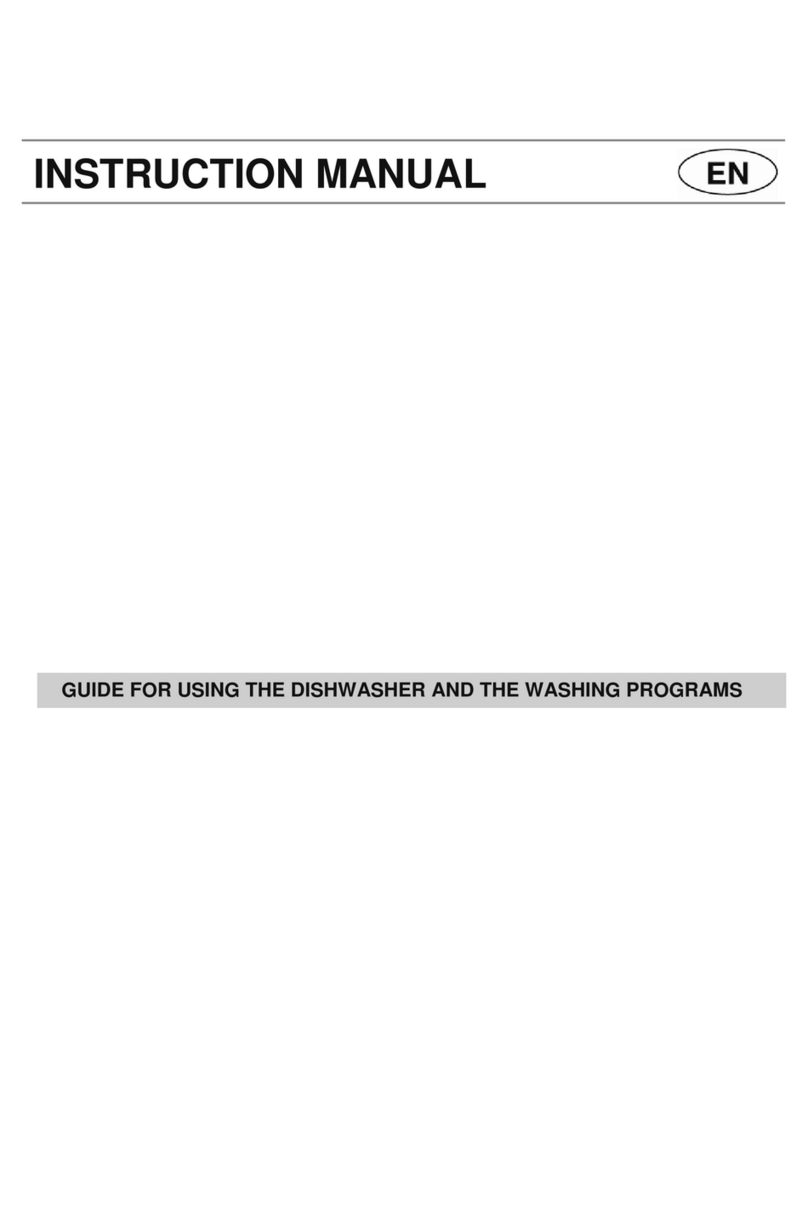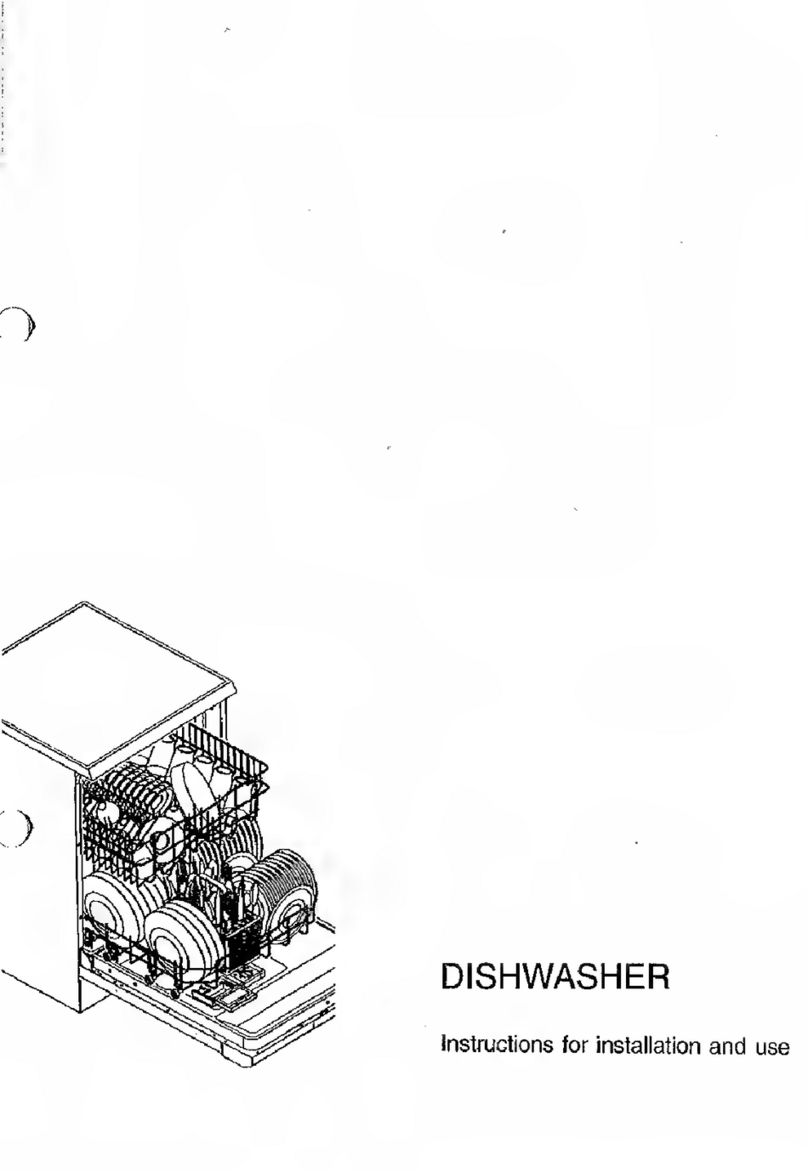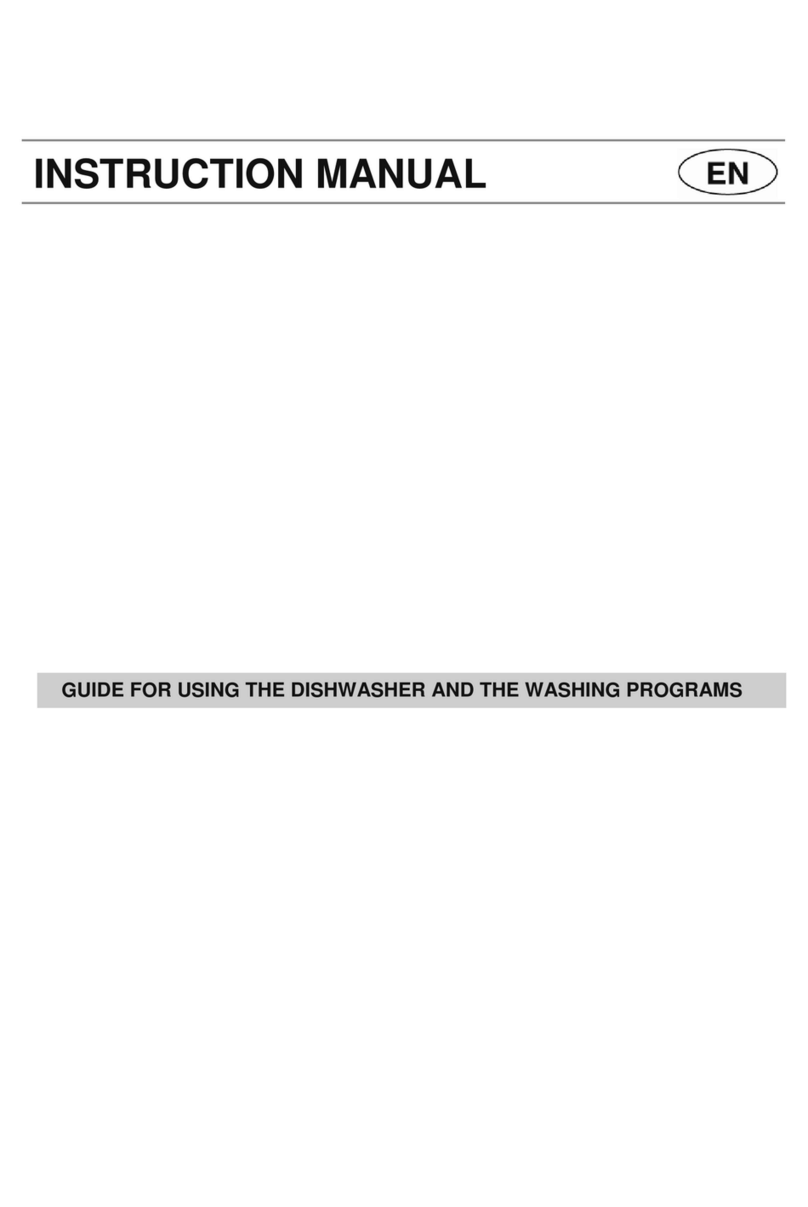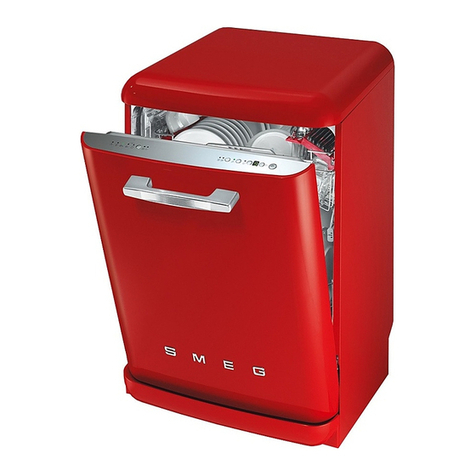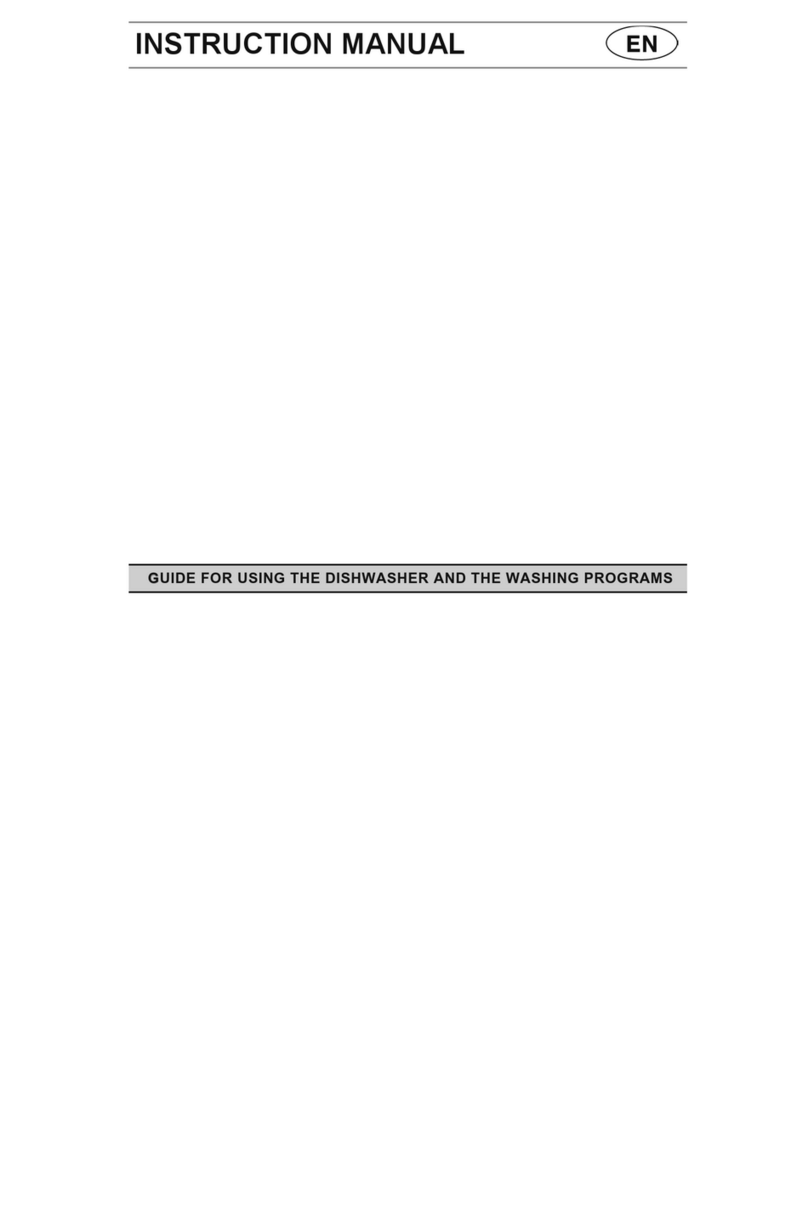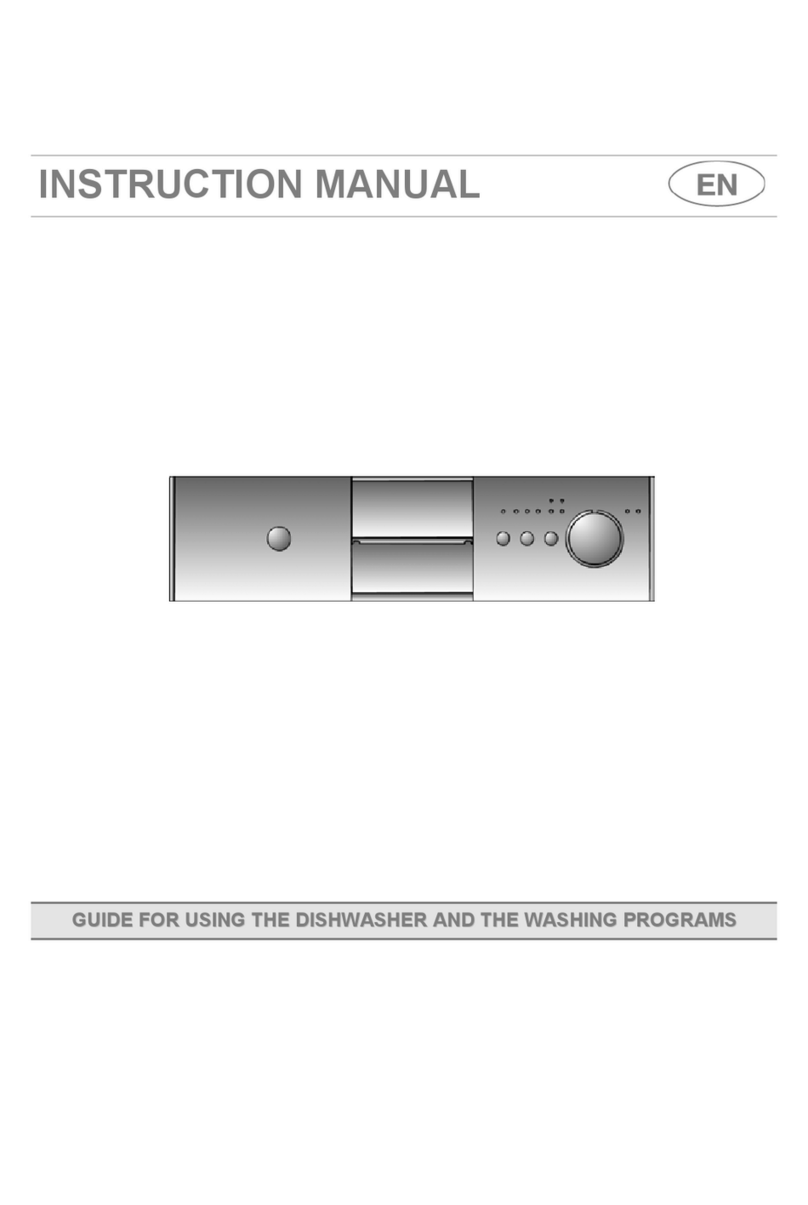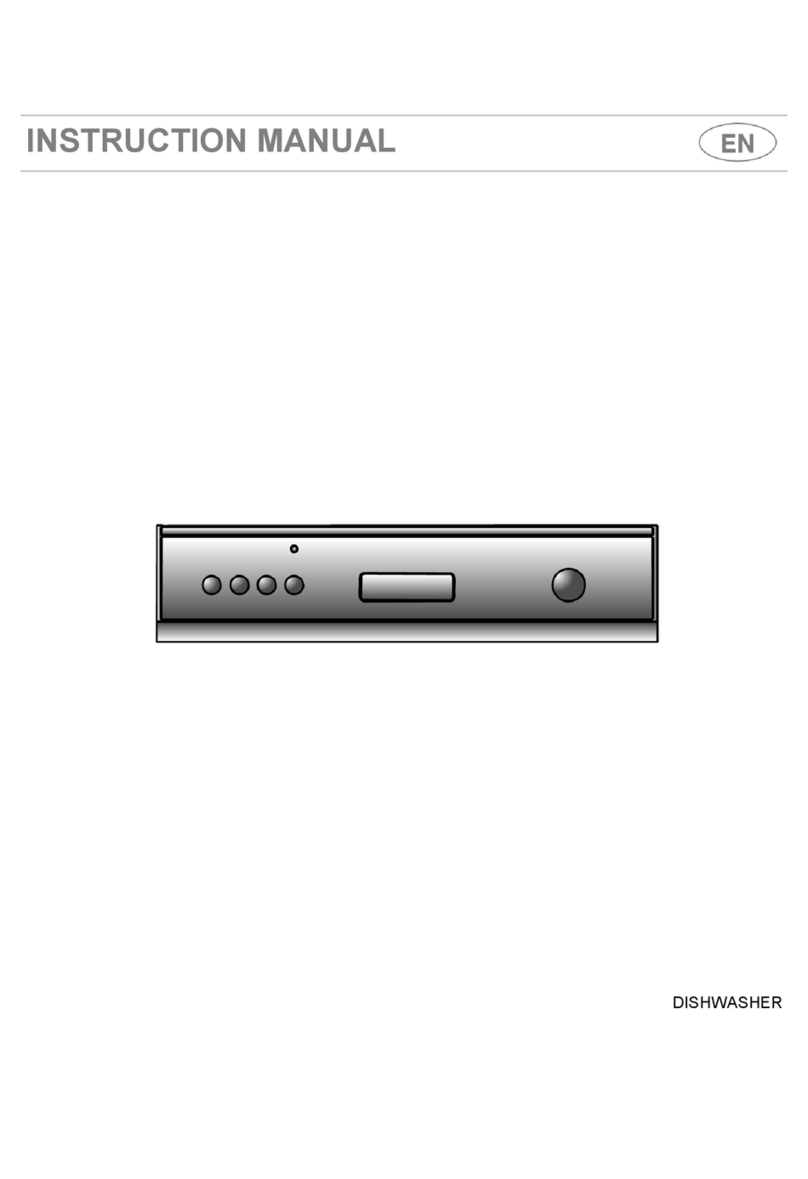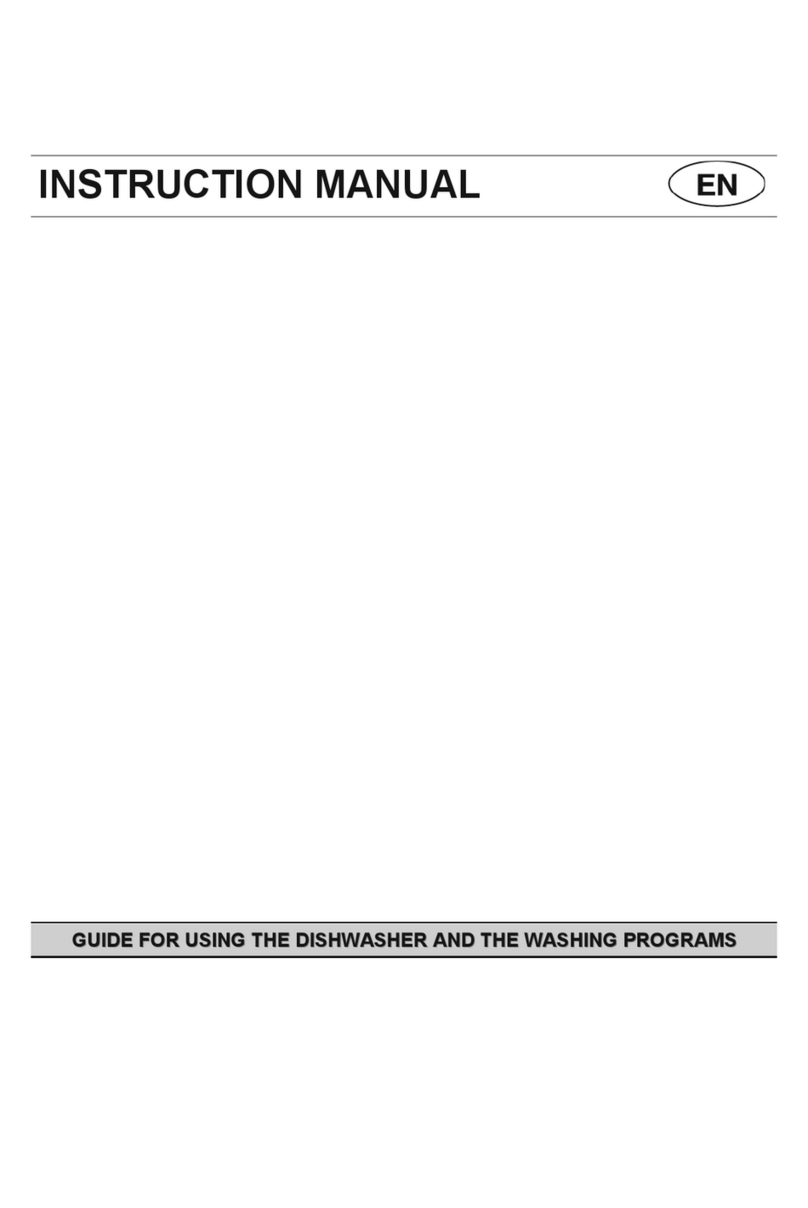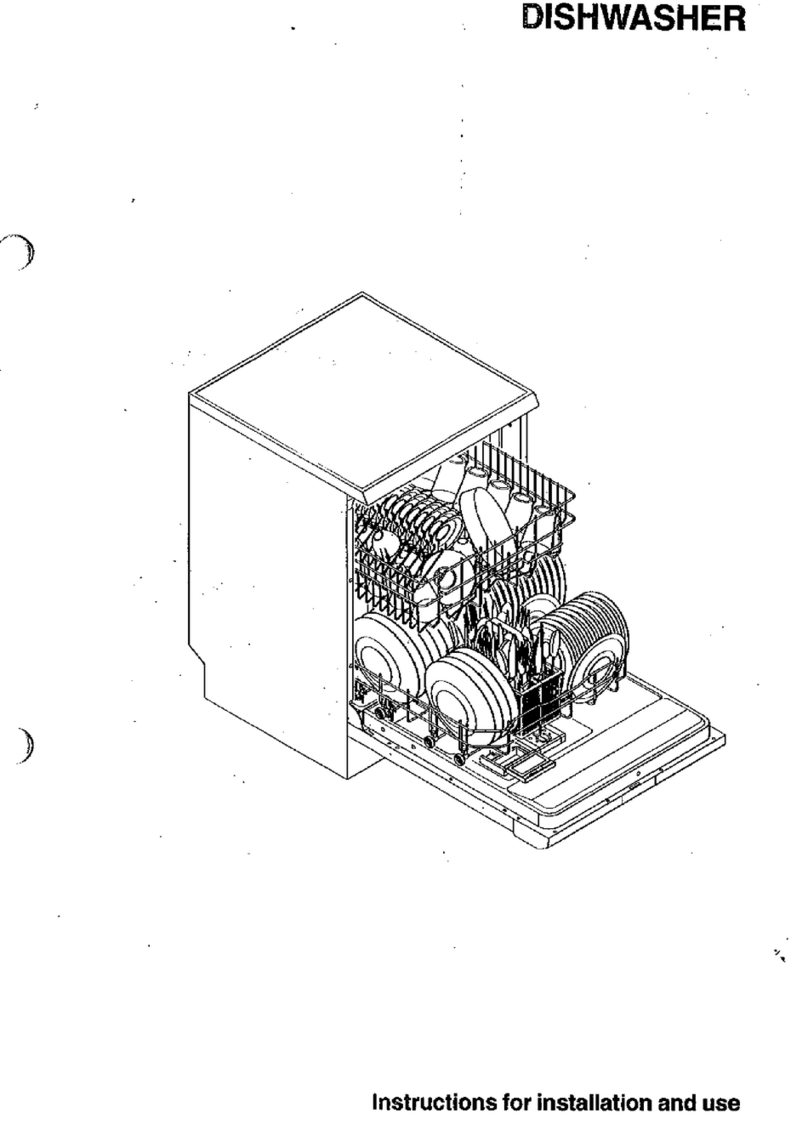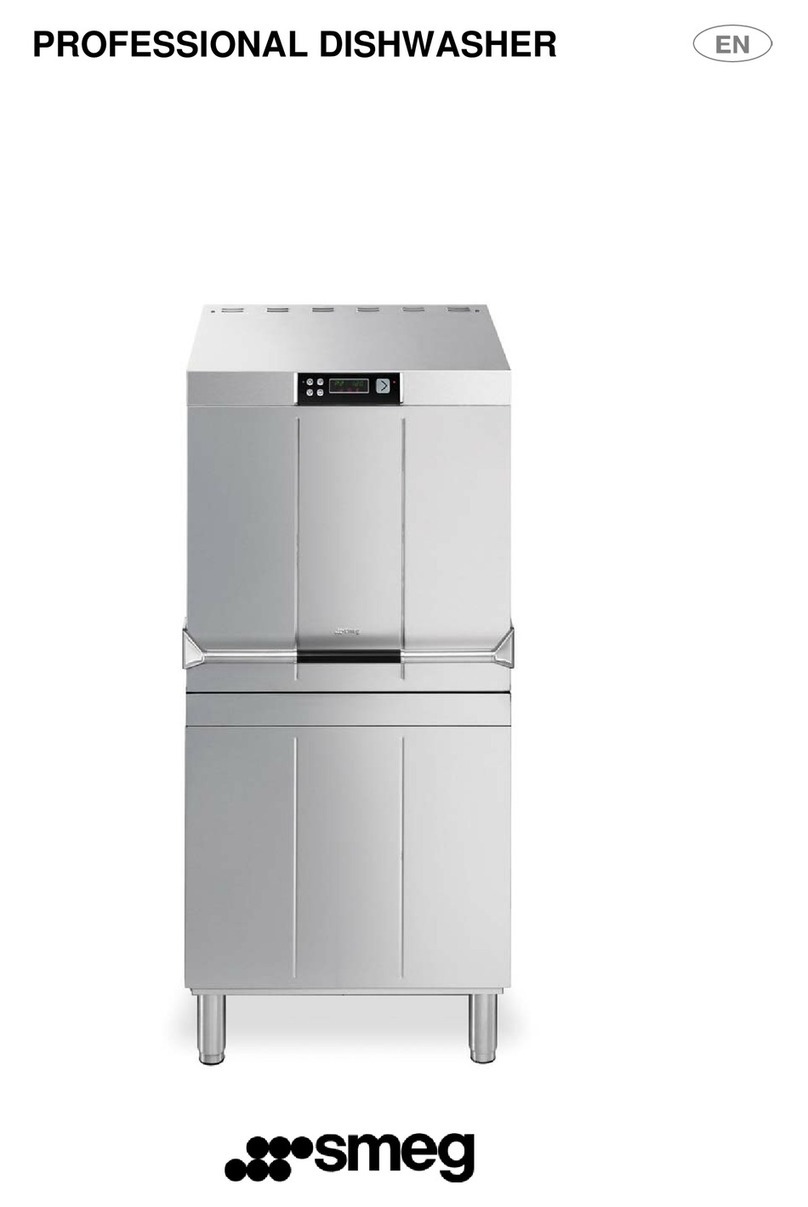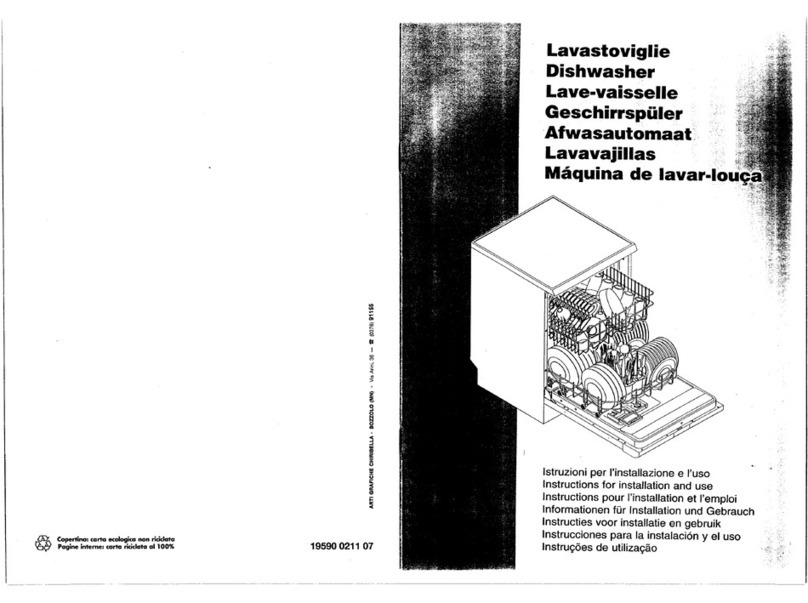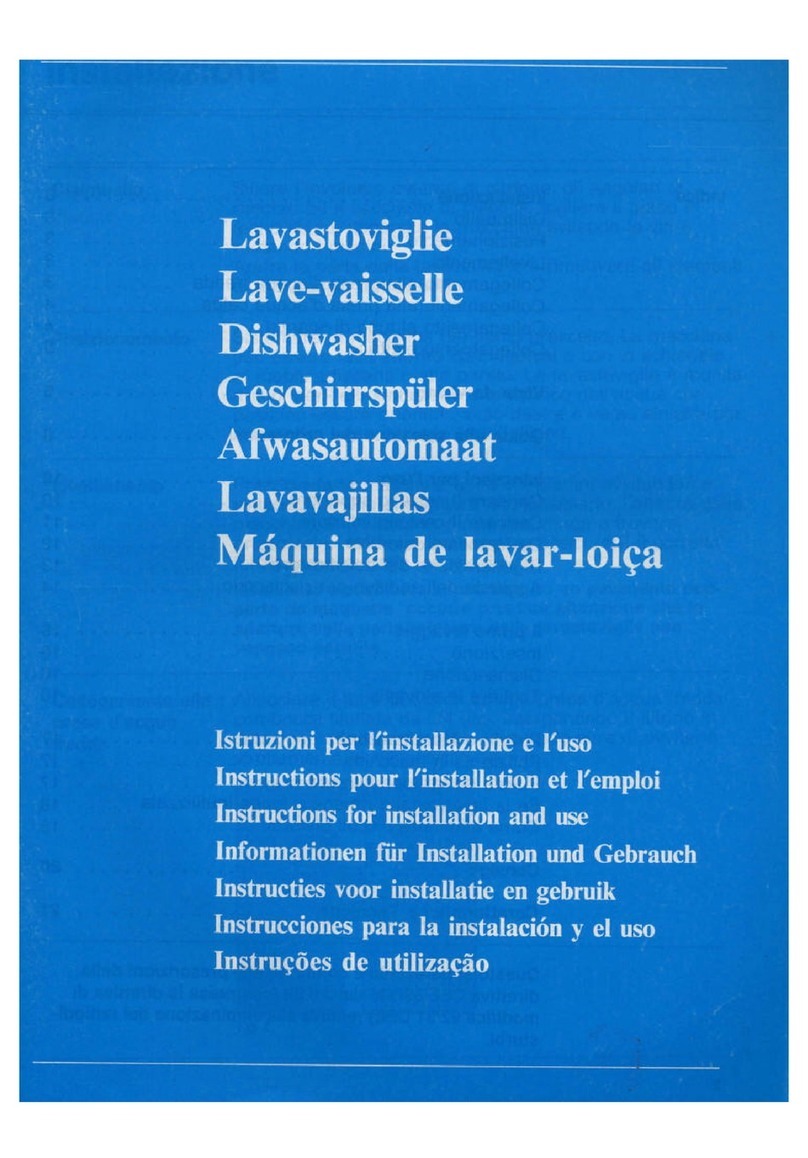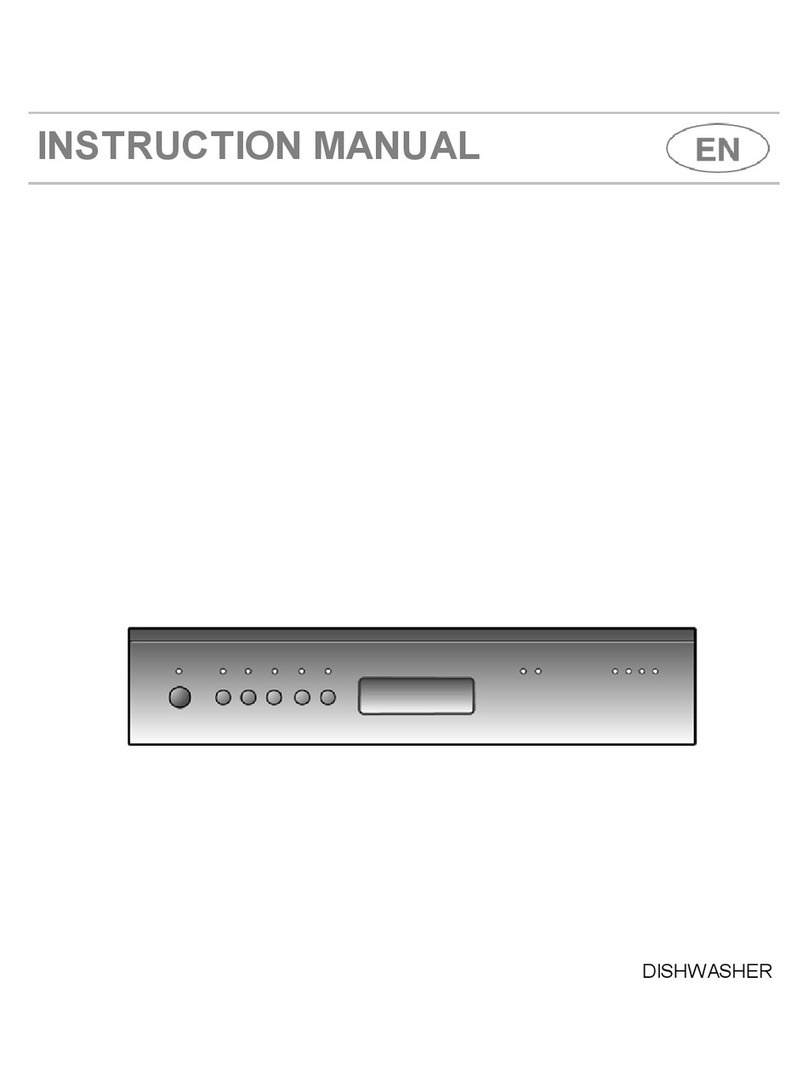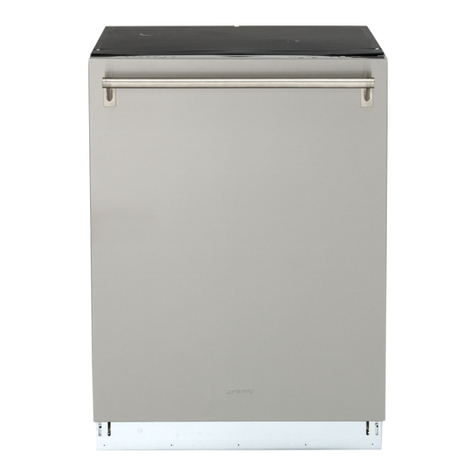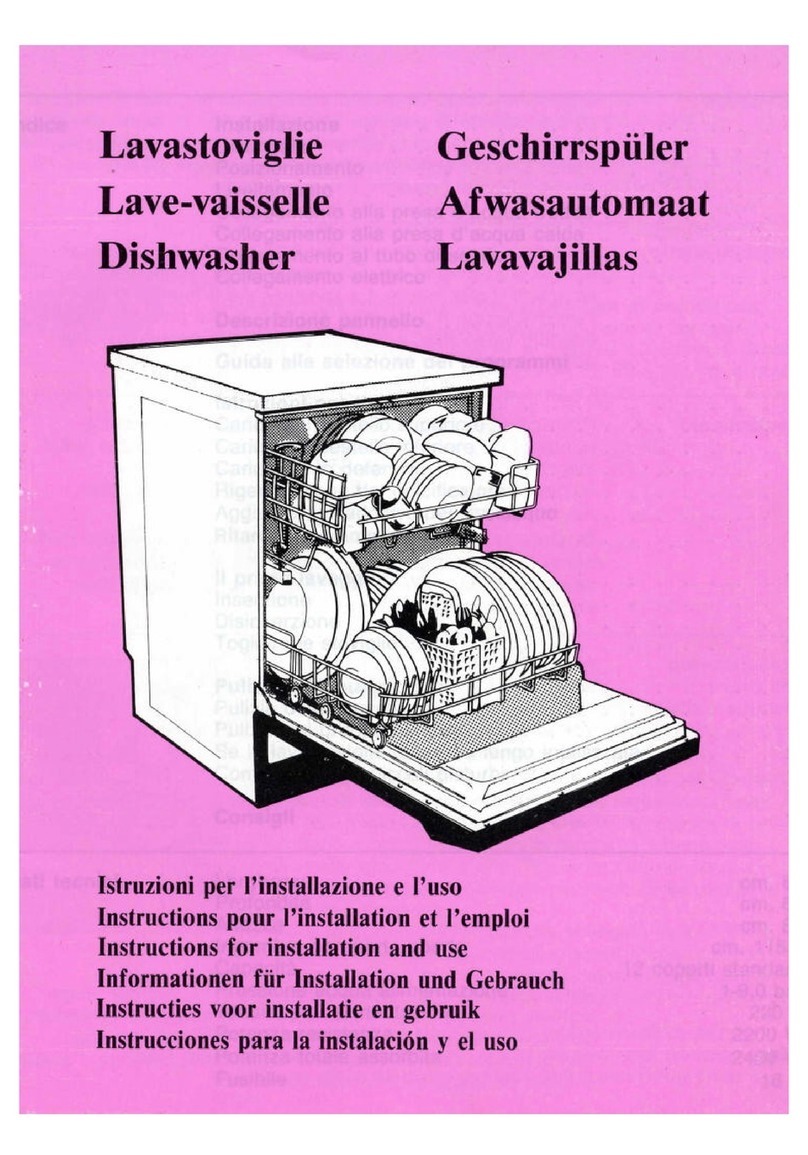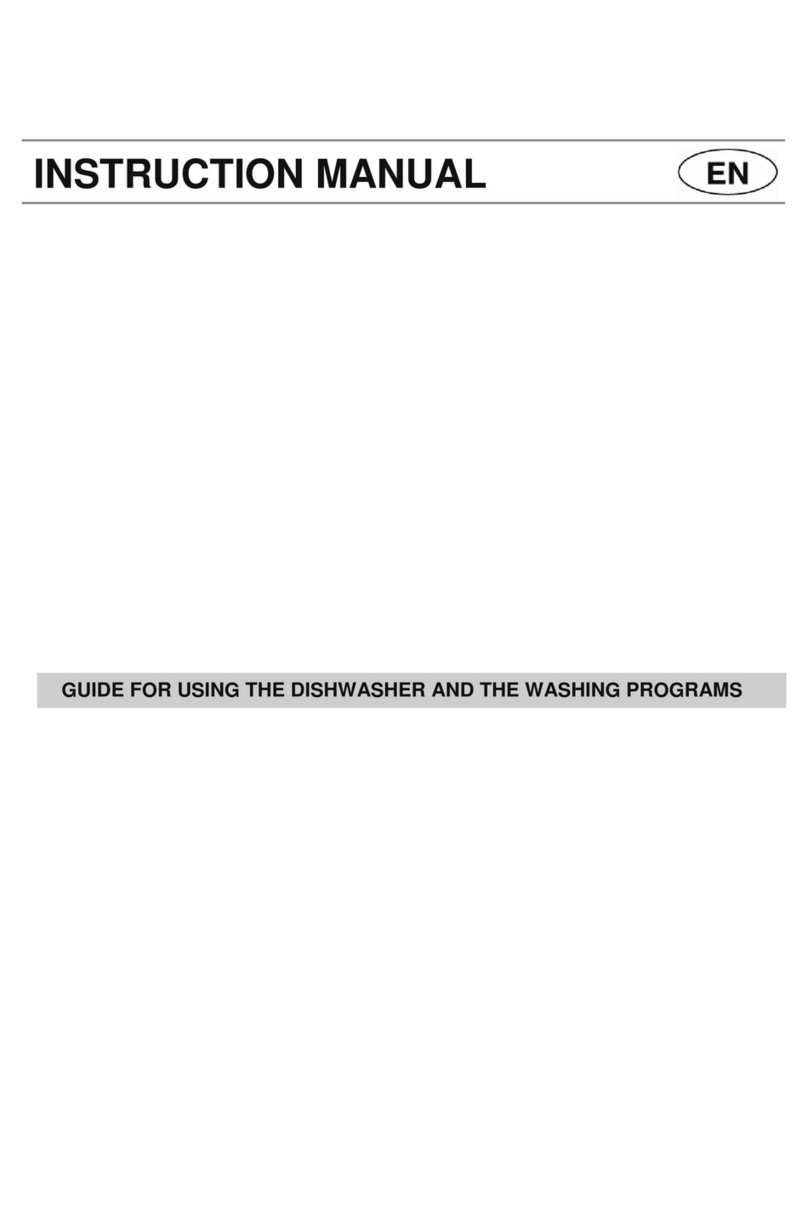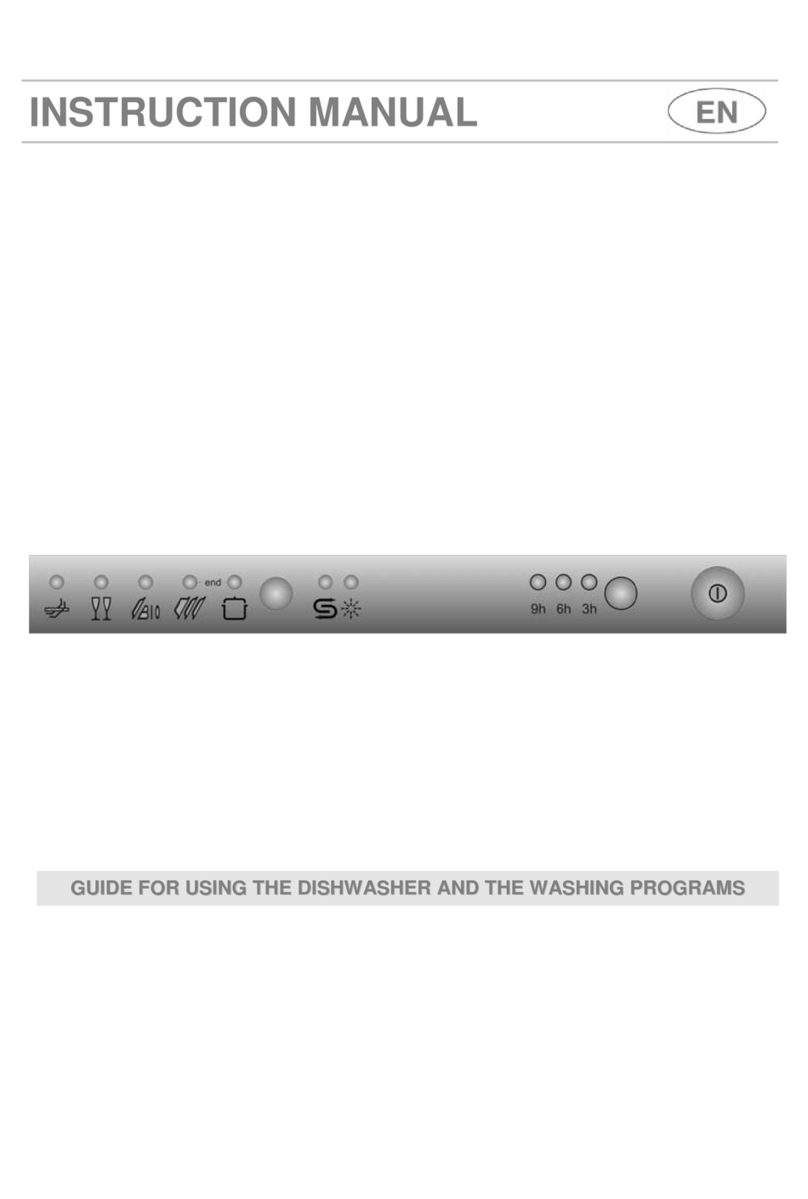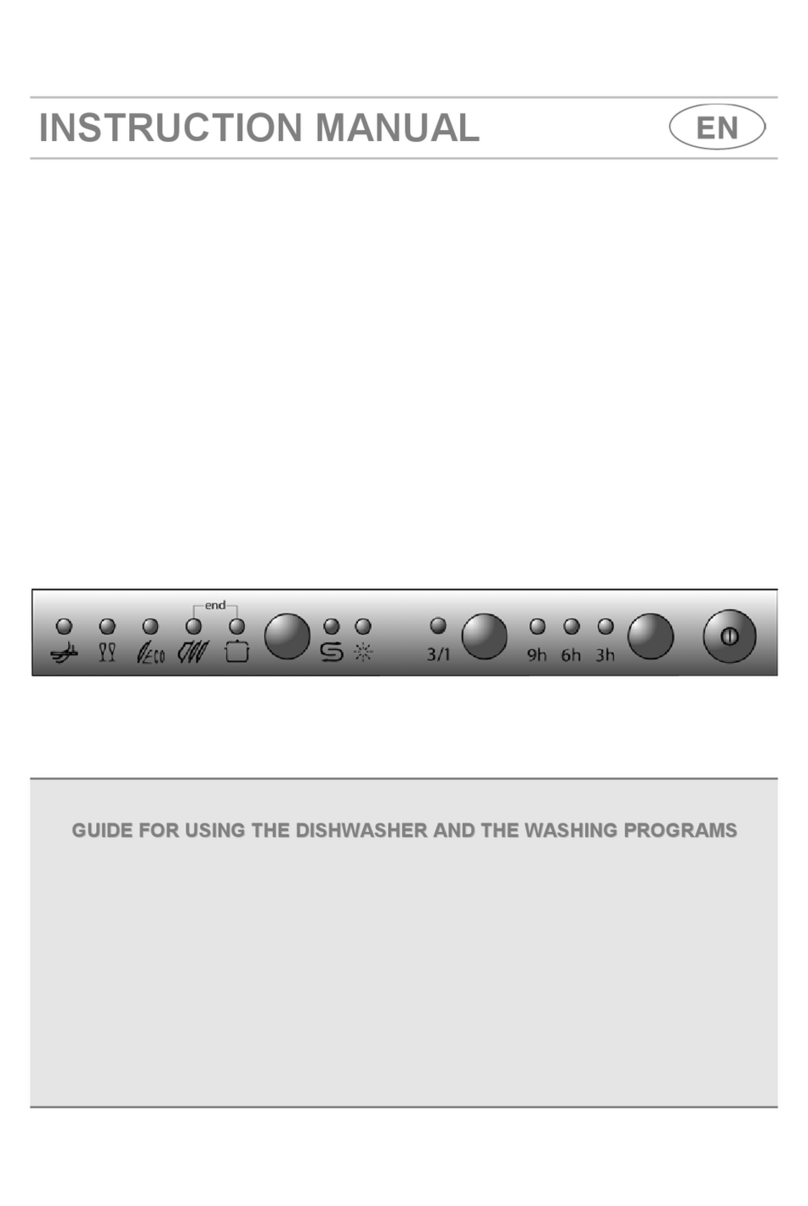
User instructions
8
Suitable when there are not many dishes to be washed, it saves energy
andreduces theprogram duration. Place dishes inbothbaskets then load
the detergent dispenser than less than the normal amount for a full load.
Press buttons 6 + 8 (QUICK TIME PROGRAMS button + ENERSAVE
option button) simultaneously to activate the "Flexi Tabs" option; the
respective light comes on to confirm the selection. The option is optimised
for use of detergents which are complete with salt and rinse aid, known
on the market as "3 in 1", "triple action", etc. With this option activated,
any salt and rinse aid If you wish to use detergents which already contain
salt and rinse aid already in the dishwasher will not be used.
N.B.: even with the " Flexi Tabs " option selected, the regenerating
salt/rinse aid lights will still stay on if their containers are empty.
IMPORTANT: the option continues to be active until it is deactivated by
pressing buttons 6 + 8 simultaneously; the light will then go out.
If the water hardness has been set on a value
above
H3
Tabs” option is activated, the relative light flashes, warning of a setting
error. Multi-function products are not suitable for use with very "hard"
water; this does not prevent the useof the option, butthe washing results
might not be of the best.
Thestartof the washingprogram can be delayedtoprogram thedishwasher
to operate at the preferred time of day (e.g. overnight). Press the
PROGRAM DELAY button to activate the option and display a 1 hour
delay. Keep pressingtoselect the delayrequired, which maybe up to 9, 12
or 24 hours depending on the model.
When the door is closed, the appliance will prewash the dishes, after
which the "program delay" set will come into effect.
